We were greeted at Catherine’s Palace, the summer home of Catherine the Great, with several five-piece bands playing American show tunes. Go figure! The palace is beautiful, painted blue with white and–of course!–gold trim. It’s also huge! I took a 360-degree video of it. Ted thinks if it were a track, it would be a mile around the circumference of the palace. This is the place where our guide went missing inside and we were adopted by another group from our ship to reach the lunch venue.
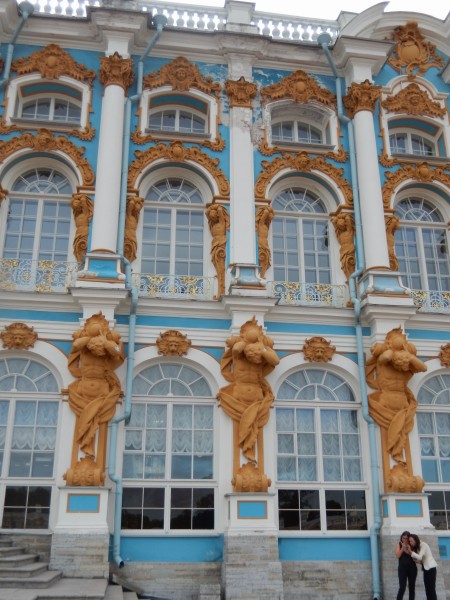
The front of Catherine’s Palace has statues of Atlas holding up the pillars for the second floor of the building. Note the two Asian girls checking how their pictures turned out and not moving aside so others can take pictures.
The Hermitage is a world-class museum in St. Petersburg. It’s a shame that it was so overcrowded, we couldn’t do anything except move through it with the herd. It’s one of the places we had to wear booties to protect the beautiful floor.
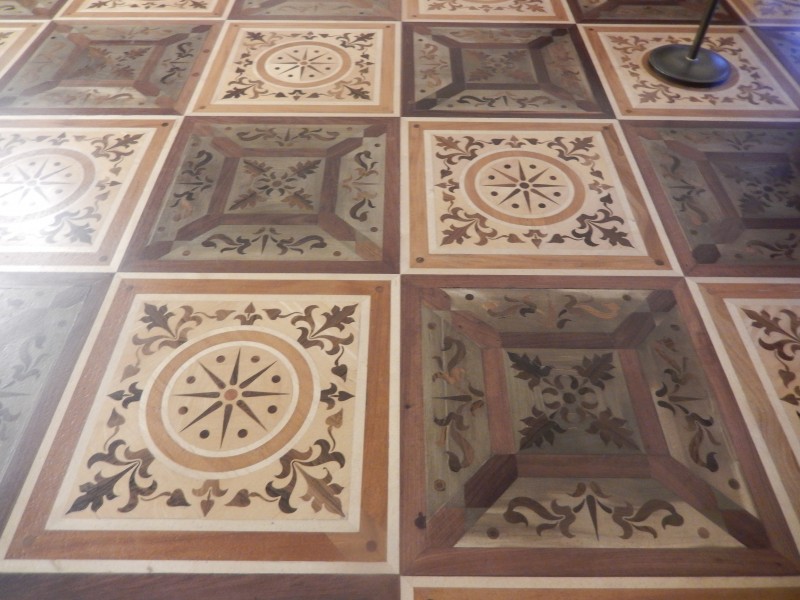
One of the inlaid wood floors in the Hermitage.
There was an elaborate “peacock clock” on display at the Hermitage. Every part of it moved on the hour. There was a video of the clock in operation so you didn’t have to be there on the hour to see it, nor would you be allowed to stop the herd to watch it if you were there. I can’t even remember all the things that happened when the clock marked the time. It was almost like a Rube Goldberg machine–you thought you’d seen all the action and then something else started moving.
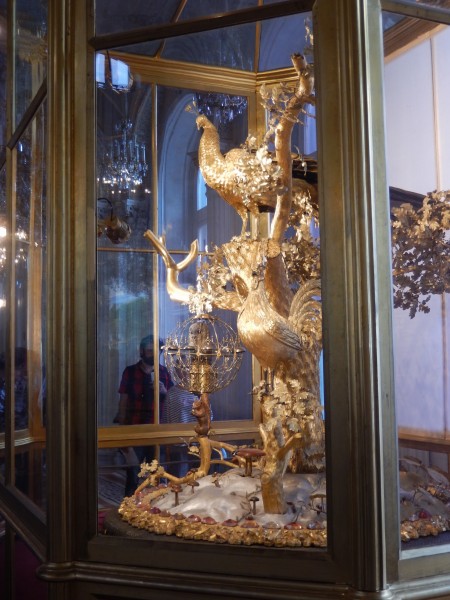
It looks like a solid sculpture, but every part of this peacock clock moves when it chimes.
Our visit to the ballet was very enjoyable. You can’t go wrong with a ballet in Russia. Best of all for lukewarm ballet fans, it was Tchaikovsky’s Swan Lake, which nearly qualifies as popular ballet.

The theater in which we saw “Swan Lake.”
The most ornate building we saw (and there were a lot of ornate buildings!) was The Sacred Church of the Spilled Blood, constructed in the Byzantine style. The entire interior, over 7,000 square meters, was Byzantine mosaics. It took a single craftsman a year to make one square meter of a mosaic pattern.
The mosaic process begins with painting a picture in reverse. Then the tiles are laid over the painting to reproduce it with the underside of the tile facing upward so that the picture is still in reverse. When that job is finished, a piece of wall paneling is attached to the back side of the tiles. When it dries, the original reverse painting is peeled off, the tiles are cleaned, and the mosaic is complete in its proper perspective. Whew!
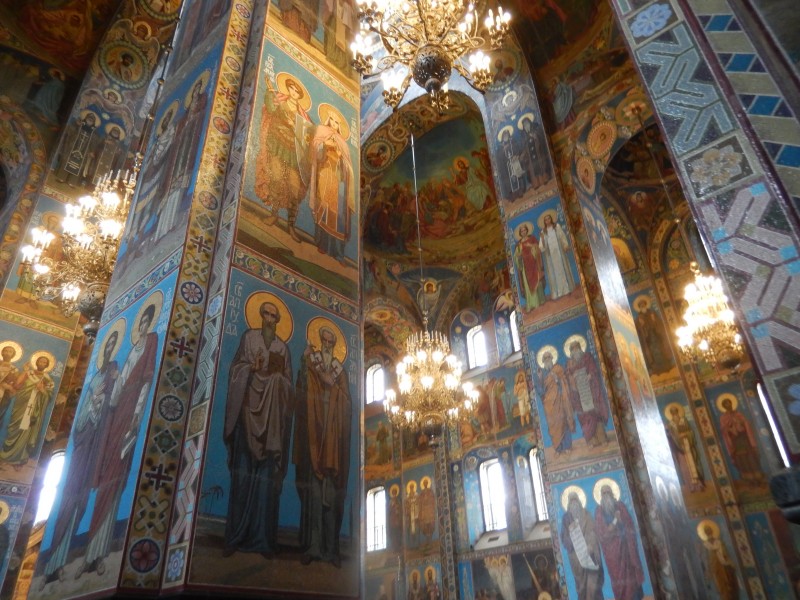
Every wall and ceiling surface in the church is covered with beautiful mosaics. It’s a stand-up church, so it has no pews.
Catherine’s Palace was probably the largest building we saw, but Peterhof, the summer home of Peter the Great (whom we were told was not yet great when he lived there) definitely had the most gold. It’s no wonder the peasants revolted, given what the aristocracy was spending on summer homes, etc. The grounds included extraordinary fountains and a huge park, and extended about a half-mile to the waterfront on the Bay of Finland. With the city center across the bay, Peter’s guests could arrive by boat, walk through the park, and have a wonderful view of the fountains and the palace as they approached. Peter was definitely creating a home court advantage.

The original palace had only the center section–less than one-half of the current building. Peter thought he needed something greater, so he added the rest of the building, the fountains, and the park grounds.
While we were walking around in another park in the city, we saw Peter the Great and the missus.
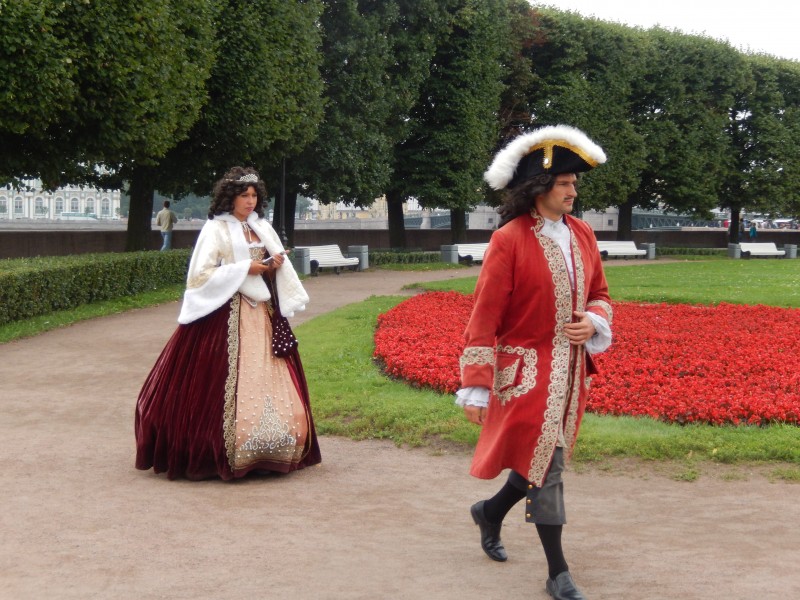
Catherine is on her cell phone, probably checking in on Facebook rather than staying in character.
At the end of our two days in St. Petersburg, we were transported by hydrofoil across the Bay of Finland to our ship. As we were boarding the hydrofoil, the wind picked up to a point where it was dangerous to cross the gangway. Boarding was halted with part of our group in the craft, and part on the pier. When the wind died down enough to board (30-45 minutes later), we got on and sailed away. The delay caused those of us onboard (about 100 passengers) to be late for our ship’s departure and meant the ship was delayed in leaving the harbor. Better safe than sorry, but we wonder what it cost and whom it cost in port charges for the delayed departure from the dock.
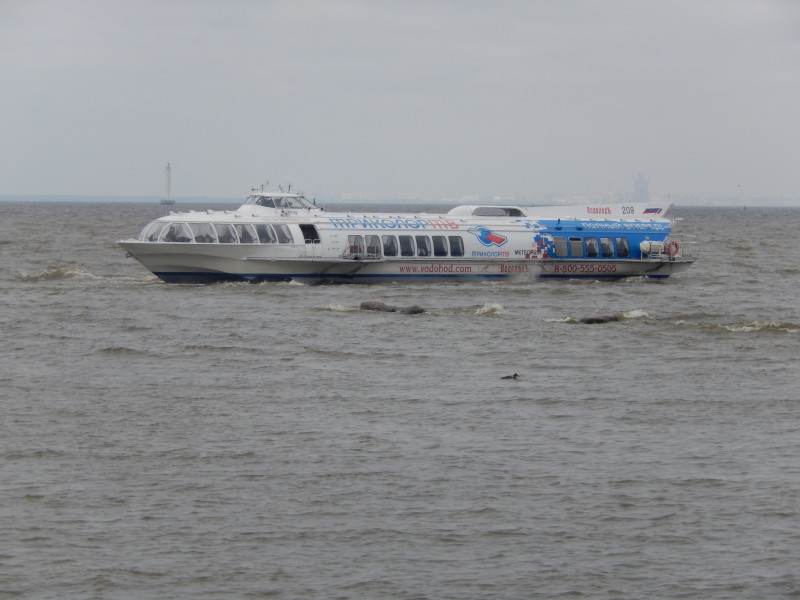
A hydrofoil like we used for crossing the Bay of Finland.
We’re glad we had the opportunity to visit the Russian city of the tsars, but are happy to return to our Western world.